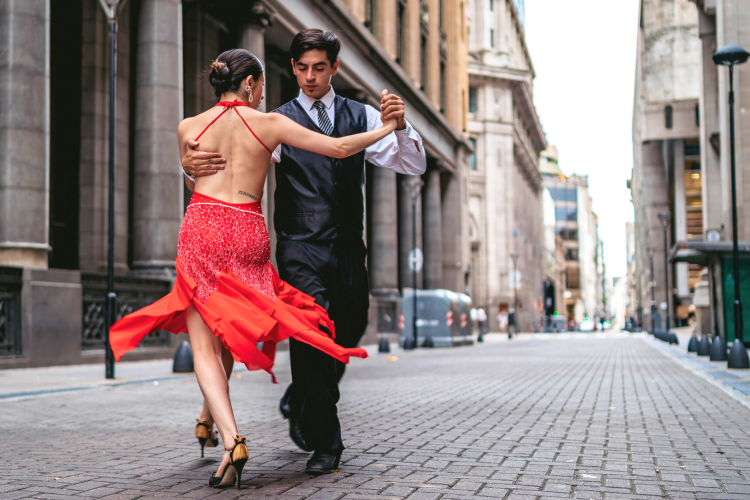The Facts About Dance San Francisco Uncovered
Table of ContentsThe 5-Minute Rule for Dance San FranciscoDance San Francisco Fundamentals ExplainedGetting The Dance San Francisco To WorkSome Known Questions About Dance San Francisco.
Let's think about Salsa dance and music as a huge Tree that appears like this: Salsa is danced world-wide while lots of technical elements of the dance coincide across designs (6 steps over 8 beats danced on a quick-quick-slow or slow-quick-quick rhythm), there are numerous "trademark" attributes of the main designs of Salsa that differentiate one from the other.Pairs getting involved in a Casino Rueda dance all relocations in unison as called by a Leader. Distinguishing attributes of Cuban style salsa are round turn patterns (with "break back" steps on counts 1 and 5) along with body language inspired by standard Afro-Cuban folkloric dances. Distinguishing functions of Cali style salsa fasts and complex maneuvering, danced with a solid hand hold link in between companions.
The origins of the style are a topic of discussion, yet it is claimed that New York style Salsa dancing came from the 1960's due to the increase of Latin American emigrants after the Cuban Transformation (salsa dancing sf). Eddie Torres is the most popular New York design dancer, being virtually generally attributed with popularizing the style to dance centres beyond New york city
The fundamental rhythm of "On-2" is slow-quick-quick. The "youngest" of the designs of Salsa, L.A (https://slides.com/dancesf). Style (some individuals have actually called it "West Shore" design) ended up being prominent in the 1990's and has its beginnings in ballroom (Mambo, Swing and Cha, Cha, Cha). Transform patterns lead and comply with methods are heavily influenced by these styles, with the Cross Body Lead being the foundation of the design
Some Of Dance San Francisco
Style are implementation of turn patterns and figures in the "port", with the break steps on matters "1" and "5". This style is also identified by expensive and often elaborate arm styling by the comply with to accent the "1" and "5" counts. The basic rhythm of "On-1" is quick-quick-slow. While Salsa music has strong origins in Cuban, Colombian and Puerto-Rican folkoric practices, it can not be discounted that all Afro-Latin and Latin American societies have actually contributed to modern Salsa music as we recognize it today.


Not known Details About Dance San Francisco
distinguishing characteristics of Salsa music are: 4/4 measure signature, Child Clave and Tumbao rhythms, Montuno Piano Unless you have a background in music, the above 3 qualities probably mean nothing to you. A much easier means to describe Salsa music is how it does NOT appear like other sorts of Latin American music.

It's time for lessons. With many studios out there and different designs to select from, where does a full novice start? Many all new dancers choose to find out L.A. "On-1" style slotted Salsa styles are one of the most prevalent in The United States and Canada (with some exceptions of some urban centres that still predominantly welcome Cuban and Puerto Rican designs) and L.A.
.A. Design will promptly educate you the principles of Salsa timing, weight transfer and transform pattern implementation. Several professional dancers, once they have actually had a year or 2 of dance L.A. Style Salsa under their belts, "switch" to New York style in order to expand their dance vocabulary; however many professional dancers choose to adhere to just one design of Salsa and appreciate their time on the dance flooring in that certain style. salsa dancing sf.
Style and New York Design all being danced in the very same club, with a number of the dancers having the ability to switch from one style to the other from one song to the following. salsa dancing sf. No issue which design you select it is essential to stick to that style up until you're very comfortable with the basics of timing, body rhythm and foundation action execution prior to considering "changing" styles (if you wish to)
When you begin on lessons be prepared to commit time and energy to learning just how to dance as a whole it takes a total novice (i. e., someone with little or no dance experience) regarding 6 months of proactively taking lessons and going out and practicing at least two times a week to reach a factor where pattern execution begins to feel "all-natural".